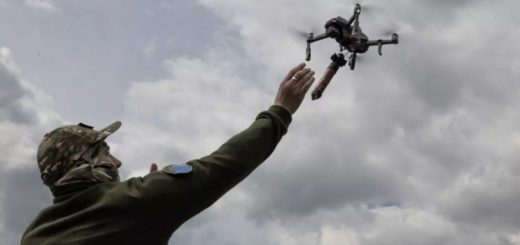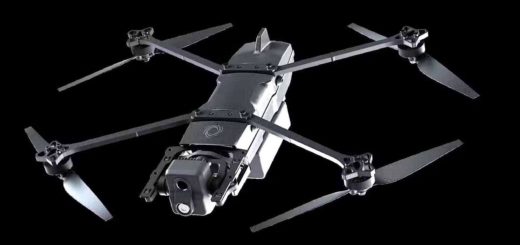Belgian Air Force Flies MQ-9B SkyGuardian Drone in U.S. for First Time Ahead of Summer Arrival in Belgium

{loadposition bannertop}
{loadposition sidebarpub}
On June 18, 2025, the Belgian Ministry of Defence confirmed that crews from the 2nd Squadron in Florennes successfully operated an MQ-9B SkyGuardian during a nine-hour flight over California, marking the first time Belgian personnel piloted the aircraft in live conditions. With training nearly complete, Belgium is preparing for the system’s arrival this summer. This development signals a turning point in the Belgian Air Force’s operational doctrine. As reported by the Belgian Ministry of Defence, the MQ-9B will become the backbone of a revitalized 2nd Squadron focused on ISR operations. Follow Army Recognition on Google News at this link
The MQ-9B’s arrival in Belgium marks not only the rebirth of the 2nd Squadron “Comet” but also a shift in Belgium’s defense doctrine towards strategic autonomy and networked ISR capabilities (Picture source: Belgian MoD)
The MQ-9B SkyGuardian is a next-generation Medium Altitude Long Endurance (MALE) drone designed to perform a wide range of ISR operations while complying with civil aviation regulations. Its standout features include a high-endurance airframe, the ability to operate in both military and civilian airspace, and a fully certifiable Ground Control Station (GCS) with integrated Mission Intelligence Station (MIS) capabilities. The system allows operators to remotely pilot the aircraft and process vast volumes of intelligence data in real-time, delivering persistent aerial surveillance with minimal ground footprint. These capabilities are central to modern threat detection and battle management missions across complex operational theaters.
The MQ-9B’s development builds upon the experience of General Atomics with the MQ-9A Reaper, but incorporates key advancements in airworthiness certification, interoperability, and endurance. Its certification for use in controlled civilian airspace, an international first for a platform of its class, marks a leap in unmanned aviation. Belgian crews have undergone modular training with simulation, ISR modules, and live flight operations in the United States and the UK, reflecting the drone’s multifaceted mission profile and complex operating requirements. This training program supports not just aircraft operation but also real-time exploitation of ISR data, vital for NATO network-centric operations.
Unlike legacy drones or earlier MALE platforms, the SkyGuardian combines endurance exceeding 40 hours with advanced payloads such as Synthetic Aperture Radar (SAR) and multi-spectral sensors. Its competitive edge lies in its ability to operate seamlessly in civilian airspace, giving it deployment flexibility in peacetime and crisis scenarios. Compared to the Israeli Heron TP or Turkish Aksungur, the SkyGuardian offers NATO-standard interoperability, more robust certification pathways, and direct integration into joint ISR frameworks, key for coalition missions. This makes it particularly suitable for European countries looking to align drone capabilities with evolving NATO standards without sovereignty trade-offs.
Strategically, the induction of MQ-9Bs transforms Belgium’s place within NATO’s ISR architecture. Positioned centrally within Europe, Belgium will now be able to contribute persistent airborne surveillance over the North Sea, Eastern Europe, or Sahel operations, enhancing NATO’s responsiveness and deterrence posture. Militarily, this boosts Belgium’s early warning capabilities, target tracking, and real-time situational awareness. Politically, it reinforces transatlantic defense-industrial links and Belgium’s commitment to sharing high-value capabilities within the alliance. The 2nd Squadron at Florennes is being revived not just as an ISR unit but as a symbol of Belgium’s modernization in the drone era.
The MQ-9B’s arrival in Belgium marks not only the rebirth of the 2nd Squadron “Comet” but also a shift in Belgium’s defense doctrine towards strategic autonomy and networked ISR capabilities. As Florennes Air Base transitions to drone operations, Belgium positions itself as a key enabler of NATO’s future reconnaissance strategies. The SkyGuardian will not just watch, it will inform, connect, and protect in an increasingly contested airspace.

{loadposition bannertop}
{loadposition sidebarpub}
On June 18, 2025, the Belgian Ministry of Defence confirmed that crews from the 2nd Squadron in Florennes successfully operated an MQ-9B SkyGuardian during a nine-hour flight over California, marking the first time Belgian personnel piloted the aircraft in live conditions. With training nearly complete, Belgium is preparing for the system’s arrival this summer. This development signals a turning point in the Belgian Air Force’s operational doctrine. As reported by the Belgian Ministry of Defence, the MQ-9B will become the backbone of a revitalized 2nd Squadron focused on ISR operations.
Follow Army Recognition on Google News at this link
The MQ-9B’s arrival in Belgium marks not only the rebirth of the 2nd Squadron “Comet” but also a shift in Belgium’s defense doctrine towards strategic autonomy and networked ISR capabilities (Picture source: Belgian MoD)
The MQ-9B SkyGuardian is a next-generation Medium Altitude Long Endurance (MALE) drone designed to perform a wide range of ISR operations while complying with civil aviation regulations. Its standout features include a high-endurance airframe, the ability to operate in both military and civilian airspace, and a fully certifiable Ground Control Station (GCS) with integrated Mission Intelligence Station (MIS) capabilities. The system allows operators to remotely pilot the aircraft and process vast volumes of intelligence data in real-time, delivering persistent aerial surveillance with minimal ground footprint. These capabilities are central to modern threat detection and battle management missions across complex operational theaters.
The MQ-9B’s development builds upon the experience of General Atomics with the MQ-9A Reaper, but incorporates key advancements in airworthiness certification, interoperability, and endurance. Its certification for use in controlled civilian airspace, an international first for a platform of its class, marks a leap in unmanned aviation. Belgian crews have undergone modular training with simulation, ISR modules, and live flight operations in the United States and the UK, reflecting the drone’s multifaceted mission profile and complex operating requirements. This training program supports not just aircraft operation but also real-time exploitation of ISR data, vital for NATO network-centric operations.
Unlike legacy drones or earlier MALE platforms, the SkyGuardian combines endurance exceeding 40 hours with advanced payloads such as Synthetic Aperture Radar (SAR) and multi-spectral sensors. Its competitive edge lies in its ability to operate seamlessly in civilian airspace, giving it deployment flexibility in peacetime and crisis scenarios. Compared to the Israeli Heron TP or Turkish Aksungur, the SkyGuardian offers NATO-standard interoperability, more robust certification pathways, and direct integration into joint ISR frameworks, key for coalition missions. This makes it particularly suitable for European countries looking to align drone capabilities with evolving NATO standards without sovereignty trade-offs.
Strategically, the induction of MQ-9Bs transforms Belgium’s place within NATO’s ISR architecture. Positioned centrally within Europe, Belgium will now be able to contribute persistent airborne surveillance over the North Sea, Eastern Europe, or Sahel operations, enhancing NATO’s responsiveness and deterrence posture. Militarily, this boosts Belgium’s early warning capabilities, target tracking, and real-time situational awareness. Politically, it reinforces transatlantic defense-industrial links and Belgium’s commitment to sharing high-value capabilities within the alliance. The 2nd Squadron at Florennes is being revived not just as an ISR unit but as a symbol of Belgium’s modernization in the drone era.
The MQ-9B’s arrival in Belgium marks not only the rebirth of the 2nd Squadron “Comet” but also a shift in Belgium’s defense doctrine towards strategic autonomy and networked ISR capabilities. As Florennes Air Base transitions to drone operations, Belgium positions itself as a key enabler of NATO’s future reconnaissance strategies. The SkyGuardian will not just watch, it will inform, connect, and protect in an increasingly contested airspace.






